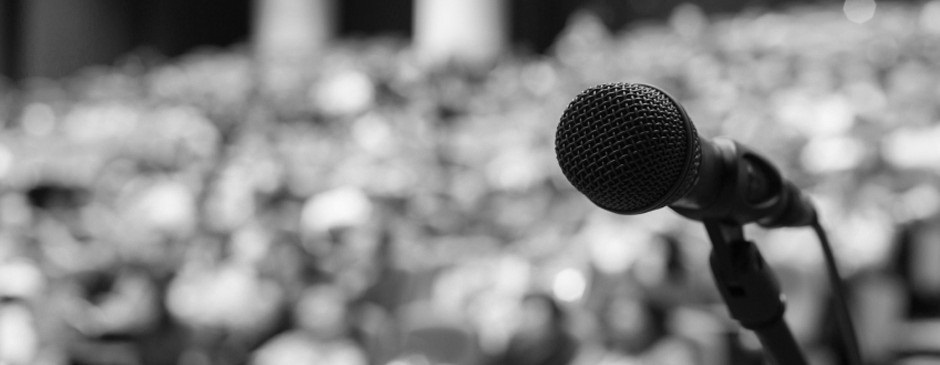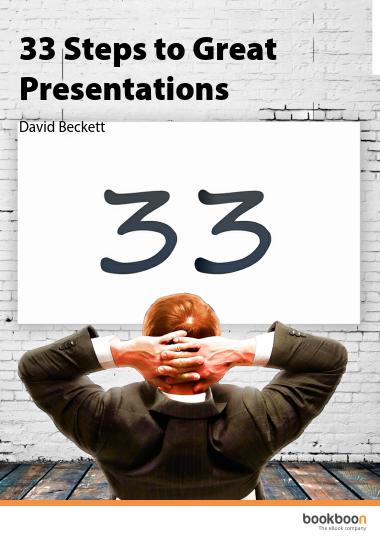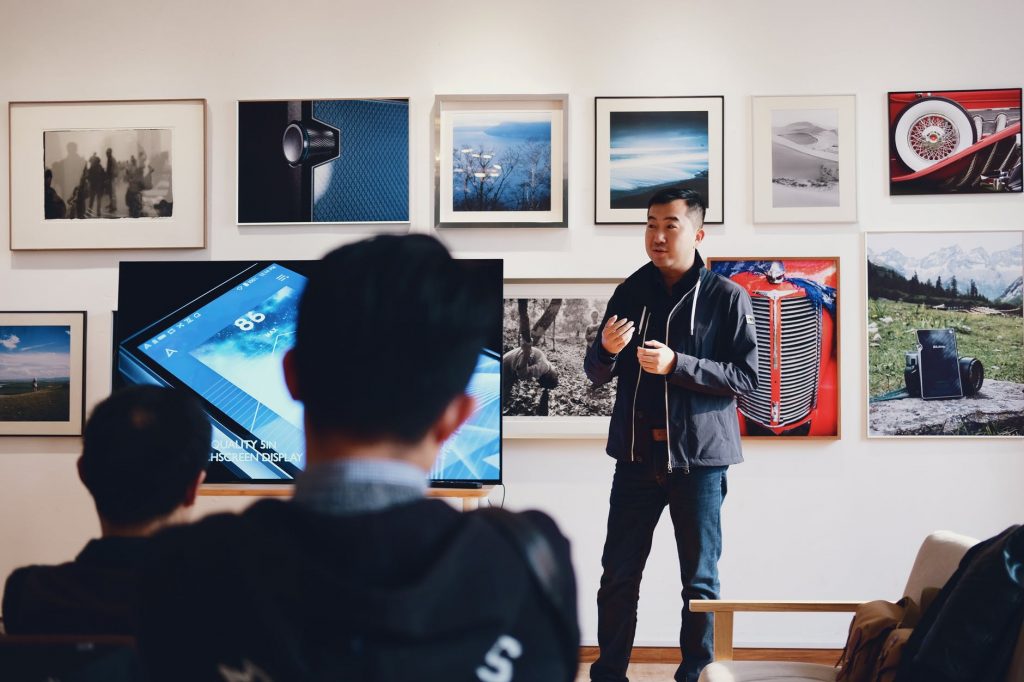How to start and finish your presentation with a bang

Public speaking is a challenge that can make many people nervous. In fact, it can be downright terrifying.
Over the last twenty years, presentation coach David Beckett coached hundreds of people and got a huge kick out of seeing them improve their presentations skills.
In this article, David shares 2 of many essentials of how to deliver a great presentation: the first 60 seconds and the end of your presentation. This article is for everyone who would like to improve his/her presentation skills. Bring it on!
The first 60 seconds
It is advisable not to try to memorise your script: it’s almost impossible and can cause you to lose your way. However, do have a few sure sentences for your most important points, as leaning posts and structure for the rest of the presentation.
The only part of your presentation that you should learn word for word is the first 60 seconds.
Consider what happens when you get up on stage. Your heart-rate increases. You probably begin sweating because your body temperature rises. Your hands might even shake a little. You’re super conscious of every move you make and concerned that everyone can see your uncertainty.
This all takes place because your body reacts under stress and goes into ‘fight or flee’ mode. Instinct takes over and pumps your body full of adrenaline: your mind is less engaged and the animal need to prepare for an attack wins.
Even the most experienced presenter in the world will suffer from some level of stress at the beginning of a presentation, because it’s a moment of being on show for all to see. It’s hard to think straight when the body is reacting that way. You’re under the spotlight – nowhere to hide.
There is nothing like hearing yourself deliver a few good lines to give you confidence. Learning the first 60 seconds will help bring your body back on your side.
Finish with a bang
Have you ever been to a concert where there was no encore? The band gets up, plays and walks off, giving the audience no chance to show their appreciation. It leaves you with a sense of unfulfillment, as if something’s not quite complete.
I once talked with musician Tom Robinson, and he explained why.
“You’ve been up on stage and given the audience your best. Part of the process is that we as the audience like to say thank you in return. If the performer doesn’t give us that chance, we feel like our part hasn’t been played.”
Tom also told me that the most important part of any song he played live was the end. “You can have an average song, but if you close it off with a clear riff and a bang, the audience will love it. They also need to know when to applaud, so give them a definite and clear ending moment.”
Tom’s tips can easily be translated into your presentation approach.
- Firstly, make your summary interesting. Instead of having seven bullets that you read one by one, make it visual; choose an image or one single word to represent each main point. This is worth rehearsing many times, as the last 60 seconds can be as important as the first.
- Secondly, ensure you finish on a big issue; for example; “And finally, we’ll launch Product X in September, and the goal is to reach 10,000 sales by end of the year!”
- “To close off, we have three big projects to complete this year; first, complete transformation X; second, re-organise division Y; and third, reach sales of 5,000 with new product Z.”
- Thirdly, be clear about the ending. After you say your last sentence, finish with a simple and firm, “Thank you!” Then stand and take the applause; in most situations, the audience will show their appreciation for you.
Of course, there is a risk that no one claps. That is a small possibility if you use these tools, but if it does occur, walk off after a couple of seconds and don’t worry about it. You’ve done your job, and if the audience didn’t get it…? Well, that happens sometimes. But only rarely, as long as you’ve done your preparation, created clear slides, and finished on a high.
Three to remember
- Make the summary visual instead of a series of bullet points.
- Be clear about when the presentation has ended.
- You complete the process in a more memorable fashion by giving the audience a chance to thank you for your work.




